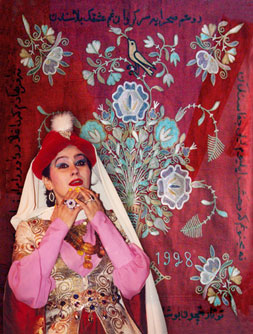 People’s Artist of the Republic of Azerbaijan Basti Jafarova playing Agabeyim Agha in the play “The Monarch and His Daughter” by I. Efendiyev
People’s Artist of the Republic of Azerbaijan Basti Jafarova playing Agabeyim Agha in the play “The Monarch and His Daughter” by I. Efendiyev by Fazail Valiyev
Clothing fashions date back to the period 40,000 – 25,000 BC. The first people to live on the land of the present Azerbaijan wore clothes made from natural materials (leather, artificial fibres leaves etc).
Stone-Age weaving
The development of weaving brought changes to the clothing people wore. Already by the late Neolithic – early Eneolithic periods, the number of woven clothes had increased; rather than appropriating readymade forms from nature, people were developing their own designs. Samples of material culture obtained during archaeological excavations on Azerbaijan’s territory (stone and bone awls, needles, spinning tools made from bone and clay, leather polishers made from bone etc) prove conclusively that the art of weaving developed during the Eneolithic and Bronze Ages.
Machine weaving played an important role in further developments in the textile arts. Remnants of fabric and parts of a weaving machine found during excavations in Mingechevir show that machine weaving was present in Azerbaijan in the early Middle Ages.
With the transition to machine weaving, the production of fabric and the weaving of clothes increased, as did the number and variety of clothes. As early as the 9th century BC, the Assyrian ruler Ashurnasirpal received clothes made from wool and colour wool fabric from Manna’s Zamya province as a tax levy. At this time, linen and wool were the main weaving materials and, in later periods, they were superseded by cotton and silk.
Herodotus, the “father of history” who lived in the 5th century BC, noted especially that fabrics of quality were woven in Azerbaijan, that tree leaves were used here to dye clothes naturally and that these adornments were durable.
From ancient times, clothes in Azerbaijan were made from the wool of goats and camels, as well as that from sheep and lambs. According to the historian Elia, fine-fleeced camels, whose wool was as soft as Milet wool (the best quality wool from Miletus –ed.), were kept in Albania’s Kaspiana province; the rich and renowned, and also the priests, had their clothes made from this wool.
Research into Azerbaijani clothing culture shows that the shape of clothes did not change much until the beginning of the first century AD. However, the tools used (spinning and weaving machines) improved somewhat. A piece of clothing hand-woven in the 3rd millennium BC, consisted of a narrow strip, was tight on the body and took on its shape. The same shape was present in the 8th century BC, but the style was freer and, by the 6th-5th centuries BC the strip was made from a very large piece of material and was gathered by a belt which pleated it at the back. Men’s and women’s clothes during that period did not differ much, either.
The papakh appears
In Strabo’s famous “Geographica” there is also information about the clothes worn by the Albanians. He noted that the Albanians, like the Iberians, carried large shields and wore helmets on their heads made from wild animals’ skins. In the 1st millennium BC, the population of these lands wore shirts and trousers woven from wool and linen, leather outer clothes, felt and woollen papakhs (high cylindrical hats), and leather shoes with upward curved toes. The main raw materials for clothes-making were wool, leather and, very probably, felt.
People’s clothes developed more intensively in the Middle Ages. Written sources dating from this period, and archaeological excavations, show that the range of Azerbaijani clothing was broadened by innovation. It has been observed that, alongside leather and wool, linen and cotton were also in general use as clothing materials.
As a rule, a fabric called “coarse calico” was made from cotton and linen. The phrase “you cannot make coarse calico from old cotton” in the “The Book of Dede Gorgud” saga; the fact that one of its characters, Qantural, “cloaked his back with coarse calico, which was made from fine linen and decorated with gold”; written sources and archaeological evidence about cotton-growing in Azerbaijan, prove that during this period linen and cotton fabrics were key clothing materials. “
The Book of Dede Gorgud” saga provides detailed information about Oghuz men´s and women´s clothing in the early Middle Ages. It is clear that the following comprised the basic wardrobe for men and women: komlak (shirt), shalvar (trousers), kaftan (a type of outer clothing, long- and short-sleeved, unfastened, made from white and red fabric) and a waistband (“coarse calico which was made from fine linen and was decorated with gold”). Items were also worn on the head, such as khans’ crowns and beys’ turbans (calma, dolband; the shoes were adik (men’s high shoes resembling boots), soqman (shoes to ankle level) and sarmuza (women’s shoes).
A Sassanid ruler rewarded Javanshir for fighting against the Arabs on the side of the Sassanid Empire. He had a gold belt with pearls and a sword with a gold shaft placed on Javanshir’s back, bracelets on his arms, a crown with gems on his head, heavy pearl necklaces around his neck, a shah’s shawl made from taffeta on his shoulder, and four tasselled blue trousers made from brocade silk fabric.
7th-9th century Arab authors who wrote about the traditional commodities of Azerbaijani towns noted that silk, good curtains and clothes made from various fabrics were exported to local and international markets from Barda, and linen fabrics were exported from Derbent.
Poetry and Polo on fashion
The “Khamsa”, written by the great poet Nizami Ganjavi, who lived in the 12th century, considered to be Azerbaijan´s “Renaissance”, contains interesting information about the fabrics and clothes of the period. The poet writes of a large variety of silk fabrics among the high-quality materials of that period. He says of women´s and men´s clothes that the most common everyday and holiday wear were shirts, papakhs, socks, dresses, kaftans etc. Individual arts and trading centres in Azerbaijan in the 12th-13th centuries specialized somewhat in the production of fabric and clothes. Thus, satin decorated with gold, and also simple silk fabrics, were made in Ganja; a silk fabric called “kazzkasida” was made in Beylaqan; a black fine fabric called “cama” was made in Barda; men’s satin outer clothes were made in Tabriz; and woollen clothes in Ganja. An Arab writer of the 10th century, al-Istakhri, wrote in his “Kitab al-masalik wa-al-mamalik” (Book of the Paths and Provinces) that linen fabrics were exported from al-Bab (Derbent), and that linen clothes were not made anywhere else but Arran, Armaniyya and Azerbaijan.
A 13th-century author, Yaqut al-Hamawi, also confirmed that linen clothes were made in Derbent. Writing about Tabriz, the author said that fabric for aba and siqlatun (silk fabric with gilded threads), xatayi (a woven Chinese fabric) satin etc. were woven here and exported to countries across the East and the West. The 13th-century Italian traveller Marco Polo also provided information about Azerbaijan and spoke enthusiastically about the abundance of silk and silk products here, as well as the silk fabrics woven here, writing that these were not to be found anywhere else he also described Tabriz’s silk fabrics.
Clothes make the man
In the 14th century, F. Rashid ad-Din, the author of “Jami al-tawarikh” (“Compendium of Chronicles”), wrote a letter to his son Shihab ad-Din in which he said that out of the three treasuries (money, weapons, and clothing and food) needed by any ruler, his stock of clothing was the most important.
The Azerbaijani wardrobe underwent significant change from the 14th-16th centuries. First of all, clothes became separated into the everyday and the ceremonial (wedding, dinner, holiday, mourning etc.), and motifs gradually became more significant on ceremonial clothes (style, colour, decoration and range of patterns). These changes can be seen in miniature paintings which reflect various areas of Azerbaijani people’s everyday lives and which depict the clothing of people from the various social strata.
In this period, Turkic-Islamic culture also reached a higher stage in its development – abstraction and complicated systems of geometrical ornamentation were established in the arts. The harmony of colours in people’s clothing, the beauty of style, symmetry and taste with which clothes were worn were given prominence in the works of painters of miniatures and in the travel notes and works of foreign travellers and geographers who visited Azerbaijan (G. Clavijo, A. Contarini, A. Jenkinson, A. Eduarde, L. Chapman, D. Deket, T. Benster etc.)
In the 16th century, English traveller and diplomat A. Jenkinson visited Abdulla khan in Shemakha. This is how Jenkinson described the ruler’s clothes: “The ruler himself was of medium-height and a stern man. He was wearing long silk clothes decorated with expensive pearls and jewellery. On his head he had a pointed turban (papakh) which was half-a-yard (1 yard is 91.44 cm) in length and was made from rich golden fabric. On top of it, he had a jalma from Indian silk, 20 yards in length and sewn with golden thread…”
The 16th century was an important period in Azerbaijan’s political history and it was also a period when the traditions of clothing culture became richer. The fact that themed fabrics dating to this period can be found in many museums around the world (in the Armoury in Moscow, the Museum of Fine Arts in Boston, the Victoria and Albert Museum in London, the Museum of Decorative Arts in Budapest, Musee des Arts Decoratifs in Paris etc.) and also in private collections (Maroon in New York, Levine in Paris etc) confirms that the production of fabric based on national traditions developed to a high level in Azerbaijan, especially in Tabriz, in the late Middle Ages. Men’s and women’s clothes made from these fabrics preserved their conservative style in subsequent centuries too, and, apart from changes in methods of cutting and sewing, artistic-decorative coloration and local particularities, they were repeated almost completely.
From the 16th-18th centuries, the main items in a woman’s wardrobe were, as in previous centuries, an undershirt and outershirt (kaftan), breeches, pants and trousers with hems reaching the knees or the heels.
Style houses
Due to an increase in the number and importance of Azerbaijani towns in the 17th century, traditional fabric weaving and clothes-making workshops and enterprises began to concentrate in the towns. In this period, the largest weaving centres were the towns of Tabriz, Ardabil and Shemakha. At the same time, other Azerbaijani towns - Ganja, Nakhchivan, Arash, Maraga, Ordubad, Dehargan and Marand - also became important production centres. Although there was no major specialization in the towns in terms of fabric production, still, Tabriz became famous for its velour, satin, red calico, multi-coloured coarse fabric and light fabric (duvaq); Ardabil – for its taffeta, duvaq fabric and qaba fabric; Shemakha - for its taffeta, or “shemakha” and duvaq fabric; and Nakhchivan – for its fabrics called “qalamkar”.
In the 17th century, a wardrobe included clothes made from wool, cotton, linen, silk fabrics and leather. These clothes had various decorative features and sewing styles– papakh, kaftan, waistband (belt), kurdi (a hat from broadcloth), head kerchief, trousers, socks etc.
In this period, the predominant clothes were: the Qizilbash papakh called “dovrband”; “ucatak” believed to be an Arab-Muslim dress; “xirqa” which was worn instead of “labbada” (“xirqa”, a long, wide garment, was worn without a belt and was buttoned from the neck down to the belt area); and also the “kamarcin”, which was similar to xirqa, but was worn during combat and with a belt; shoes with or without heels, shoes woven from white linen yarn, with a fabric sole of several-layers, called “giva”; and “caqcur” shoes worn with socks woven from woollen yarn and with cloth wrapped round the feet.
Zadagan women wore a triangular crown on their heads, called a “nim-tac” or “tiyar” and wrapped a band round it. The “tiyar” was also an important sign that the woman was married. A skull cap decorated with beads, and a shawl and veil were also inseparable parts of women’s clothing. The hem of a women’s dress was gathered, folded at the front and attached to the belt; its lining was made with special care from a coloured silk fabric that was pleasing to the eye.
European influence
The period of the khanates and its trends towards independence encouraged development in agriculture and craftsmanship in individual regions of Azerbaijan. The production of hand-made goods was boosted, centres of arts and trading, like the town of Shusha expanded, and there was a broadening of commercial and economic relations with other Eastern and European countries. This led to the further enrichment of the range of Azerbaijani clothing, improvements in quality and the mass production of a variety of clothing materials. There was also an increase in the number of handicraft workshops making garments.
In this period the khanates were based on large Azerbaijani towns which developed as important arts and trading centres. The production of fabrics and clothes was concentrated primarily in these cities.
Further, in the 18th century European clothing began to exert an influence and foreign motifs ousted those of the themed fabrics of the Middle Ages. Geometrical, floral and linear motifs began to dominate.
From the second half of the 19th century, many types of handicraft, manufacturing and factory enterprises producing clothing materials in Azerbaijan began to undergo major development. The resultant increase in the variety and production of clothing materials paved the way for more colourful fashions, with greater variety in range, form and type.
Fashion labels
These fabrics, produced domestically or imported, were given popular, and sometimes provocative, names: “It has deceived me”, “I have grieved”, “Haji, don’t look at me”, “Night and day”, “The street seems too narrow”, “ A thousand and one flowers”, “Come, take me for a walk”, “No sloven would wear me”, “To make my neighbour jealous”, “Slipped and fallen”, “Don’t touch, or my flower will fall”, “The Sun and the Moon” etc.
From the late 19th century, industrially produced clothing, now well-entrenched in people’s everyday lives, began to supplant hand-woven garments. During this period, textile products brought to Azerbaijan from Russia, Iran and European countries prevailed over local output.
Along with their foreign clothes, however, the richer social layers in Azerbaijan continued to wear taffeta, satin, velour etc. for a long period, in this way maintaining traditions until the middle of the 20th century.
About the authors: Fazail Valiyev is a leading scientific fellow at the Institute of Archaeology and Ethnography of the Azerbaijani National Academy of Sciences. He is one of the authors of the multi-volume “Azerbaijani Ethnography.”
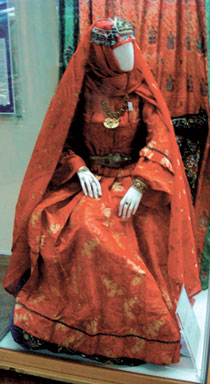
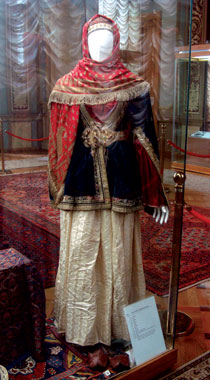
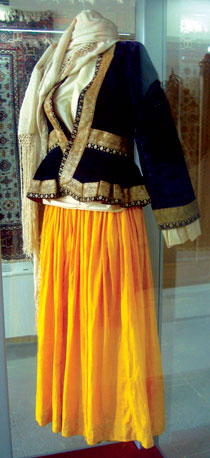
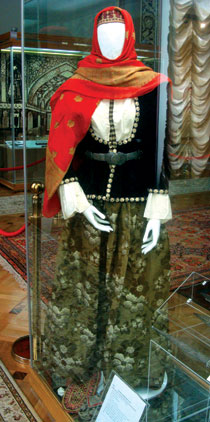
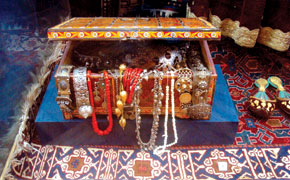
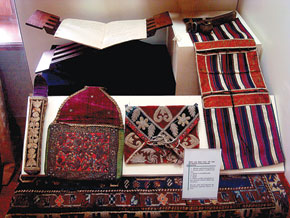
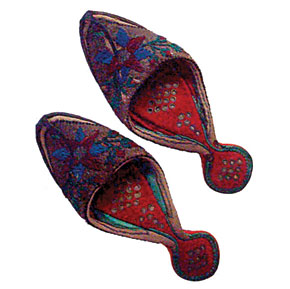

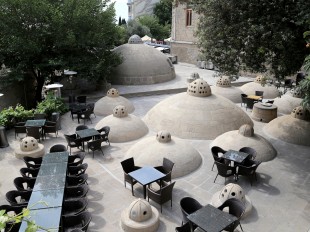
.jpg)